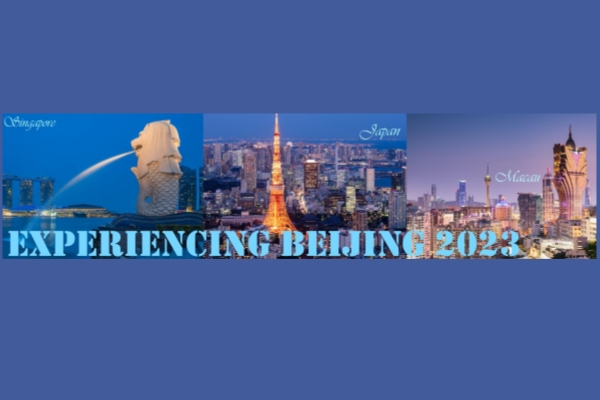Design week puts Chinese creativity on show
Icons of the founding of the People's Republic of China a major highlight
The Beijing Design Week 2019 is showcasing China's top creativity and innovation across a vast palette of art, industry, history and culture as it runs from Sept 5 to Oct 7.
The design week has been held every autumn in the capital since 2009, except in 2010, and has become a leading international platform for Chinese design.
A major highlight of this year's event is the Exhibition of National Image Design at the Beginning of the Founding of the People's Republic of China.

Guests unveil this year's classic design award at the opening ceremony of the 2019 Beijing Design Week in early September. [Photo/Wang Zhuangfei / China Daily]

Left: A craft expert shows his skills at an exhibition during the ongoing Beijing Fashion Week. Right: Visitors show interest in metal designs on display. [Photos Provided to China Daily]
It reflects the importance of design in the early years after the foundation of the PRC, said Wang Yudong, general manager of Beijing Design Week Co.
The exhibition, held throughout the 2019 design week, showcases designs of the country's flag, emblems and anthem and tells the stories behind the archives, design drawings and file photos.
The event coincides with celebrations of the PRC's 70th anniversary.
Mexico City is the guest city being featured at this year's design week. It is helping Chinese people to learn more about Mexico City as a design destination, organizers said.
At the award ceremony for the Beijing Design Awards held on Sept 5, a Mexican-made pottery design called The Sinkhole was honored with the traditional craft design award.
The blackened pottery mimics the land formation of a sinkhole hanging from a wooden frame, and according to the organizers, combines practical and artistic elements.
Mexico City is hosting an exhibition called Design Beyond Borders at the China Millennium Monument from Sept 5 to 16, showcasing the city's original design concepts from the perspectives of craft innovation, space design and culture.
Isaac Landeros, curator of the exhibition, is a Mexican architect and designer who has lived in Beijing since 2012.
He said at a forum during the week that design is a powerful language, and it is necessary to use diverse modes of design to integrate culture from different countries.
The guest city title each year is an official means of communication between the Beijing government and foreign cities in innovation and design fields, organizers said, adding that it is important for the event to display the world's latest design concepts and traditional design essence of different ethnic groups.
Previous guest cities include London, Milan, Amsterdam, Dubai, Seoul and Berlin.
This year's classic design award, the top gong of the Beijing Design Awards, was given to the Shenzhou V manned spacecraft.
The spacecraft features automatic defect diagnosis and escape systems, and is especially designed with solar wings on the orbital module, which enables the module to keep track and carry out spatial experiments while unmanned.
The design has greatly extended the spacecraft's working life for spatial experiments and applications, increasing its comprehensive functions, the design week's organizers said.
Other activities of the design week include the Beijing Design Expo that took place from Sept 12 to 16. It showcased the development of design craft over the past seven decades and its influence on social development at different times.
Public artworks were also exhibited alongside communication and trade among influential Asian architects, designers, real estate developers, retailers and buyers.
Fashion Beijing has hosted events such as runway shows and an online fashion design contest, which promoted clothing brands and discussions on China's creative design, the organizers said.
Beijing Gehua Cultural Development Group has been among organizers of the Beijing Design Week for several years.
Li Danyang, general manager of the company, said when the design week was held for the first time in 2009, there was no consensus on the importance of design, including its significance in promoting development and industrial upgrading.
Li said in the past decade social progress has been made with Chinese and international design.
Beijing boasts a strong design ambience and vitality, according to the organizers.
The city is home to 119 design schools with more than 30,000 students. More than 250,000 people work in the design sector, one of the city's pillar industries.
Beijing has more than 30 areas featuring cultural creativity such as the 798 Art Zone and 751 Design Park. Noted works of design in the city include the National Centre for the Performing Arts designed by French Paul Andreu and Galaxy SOHO designed by Zaha Hadid.

 Responsibilities of the SOCAAC
Responsibilities of the SOCAAC Experiencing Beijing 2023
Experiencing Beijing 2023